
Look, you don’t have to tell me about it: I was there. There wasn’t a lot going on for movie-crazed kids in Phoenix, Arizona circa June 1987, so when something as significant as Arnold Schwarzenegger fighting a seven-foot-tall alien emerged, a kid like me would hear about it. Never mind that I was just six years old, or that to watch a movie like Predator I had to sneak out of Harry and the Hendersons and into a packed theater of sun-bleached suburbanites: certain moments transcend age or even total comprehension.
This was a special time, mind you. In March of that year, Oliver Stone’s Platoon took home the Oscar for Best Picture, with critics and audiences alike celebrating the deconstruction of any remaining mythology surrounding the Vietnam War and America’s unrivaled military dominance. Hollywood, already scraping the bottom of the idea barrel for whatever cocaine dust remained in the cracks and crevices, realized it had to move beyond cold war villains and other boogeymen of the past. A famous joke amongst executives and industry folk at the time revolved around the fact that Rocky Balboa, having already defeated communism, would have to fight E.T. in his next movie. Joke though it may have been, a spec script by screenwriting duo Jim and John Thomas took this to heart, and after it passed through Hollywood’s sausage maker and came out the other end, Predator was born.
A big-budget slasher flick wrapped in 80s action clothing, the film premiered on June 12, 1987, the same day Reagan challenged Gorbachev to “tear down this wall.” Living in the twilight of a world where Oliver Stone had ripped the guts out of this country’s swagger, when presidents and premiers traded toothless remarks instead of artillery shells, Predator appeared at a very special moment. The time of pissing contests between nuclear powers was over, with an action hero like Schwarzenegger so lacking in true, honest competition that he had to search for it off-world.

It was a broad sea-change not just for Hollywood, but the world writ large, and audiences and one particular six-year-old in Phoenix took notice. Over the next 35 years, three (soon to be four) sequels and two franchise crossovers cashed in on the magnificent legacy of having no time to bleed. With the release of Prey this week, an examination of what makes a good Predator picture is nothing less than essential.
This isn’t as difficult as it may seem, either. Certain pervasive and undeniable features have always defined your standard Predator flick, and how they were deployed in the existing 4-film (no Alien crossovers) canon can be quantified by way of an 8-point evaluation system. These eight categories are as follows:
- Kill Count (Active Killings Seen Onscreen)
- Kill Frequency (The Average Time Between Kills)
- Total Predators (More Predators > Less Predators)
- Acting Quality (Judged on the EGOT Scale for Top-Line Speaking Cast)
- Box Office (Gross over Budget Quantifier)
- Critical Score (RT/Metacritic/Cinema Score)
- Hand-to-Hand Melee Encounters (As Percentage of Total Runtime)
- Body Mass (As Defined by the 8 Top-Line Speaking Cast)
Using these metrics, we can objectively rate each installment in a broader effort to understand what makes these pictures so special in the first place. Like the Yautja, this will be a cold, dispassionate, disciplined investigation; it is one that looks at what it means to fly a film under the Predator banner, and the lessons the franchise has taught the world over the years: lessons that inform this very study, starting with…
Kill Count & Frequency
Predator (1987)

The original installment in the Predator franchise was a lot of things, but in a hurry wasn’t one of them. 35 years ago, no one knew what the hell a Yautja was, so director John McTiernan and the script by the Thomas brothers had to ease the audience into things. Invoking slasher genre tropes, the film took an unknown but familiar “menace” quantity and pitted it against the toughest, burliest, most sleeve-averse group of bad-asses Hollywood could assemble at the time: led by Mr. Big-Dick-Energy himself, Arnold Schwarzenegger.
Establishing the setting and the players took a bit of time, however, which left Predator with an astonishing 21 minutes and 30 seconds without a kill (Jim Hopper’s Green Beret squad bought it off-camera). Ho-ly shit did it get busy from there, though. Once Dutch (Schwarzenegger) spied the execution of a hostage from afar, his boys racked up a couple of quick and quiet sentry kills that cleared the way for an astonishing 9-in-1 murder maneuver by the good Major himself. This kicked off an absolute orgy of unrestrained 80s violence that knows no peer (in the franchise, or Hollywood writ large).
From 24:33 (the truck bomb) to 27:36 (“knock knock”) there was a remarkable 50 onscreen deaths. This bears repeating: 50 in three minutes and three seconds, which accounted for 81.9% of the movie’s overall kills. Many of these came in clusters, like Painless’ first pair at 0:25:19, or Billy’s (Sonny Landham) grenade triple at 0:26:52, but what’s remarkable is the relative parity of mayhem between squad mates. Like a practiced basketball team, the kills moved and rotated through them like a well-passed ball, with every player getting some shots in here and there.
Granted, the film took almost fifteen minutes off between the final kill from this mass culling to Hawkins’ (Shane Black) demise at 0:42:02, and in the near hour from then to the credits rolling, there was just 6 additional onscreen deaths. At first glance the numbers do not appear even, but with 61 onscreen kills in 103 minutes, the numbers don’t lie. Predator clocked in at 1 kill every 1.688 minutes (or 0.592 kills a minute) with a frequency rate of 99.245 seconds between murders.
Predator 2
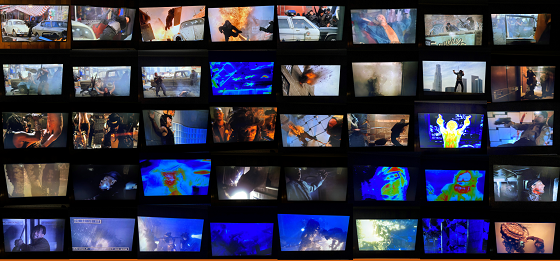
A buck forty-three and it was on, that’s how serious director Stephen Hopkins took this assignment. As already discussed, Predator (1987) waited a veritable lifetime to get to its first kill, but not the sequel: no ma’am. Not two minutes into this thing and Predator 2 was already plugging cops like holes in a dam. Five of the LAPD’s finest dropped before the 4-minute mark, and by the time Lt. Harrigan (Danny Glover) shot half a dozen holes into El Scorpio (Henry Kingi) at the 10-minute hash, it was already up to 17 confirmed onscreen. 17 at 10 minutes in! Granted, this isn’t the kind of pace any film can maintain without driving its audience into a full-bore mental collapse, so it did eventually slow its roll. Indeed, Predator 2 wisely let its script breathe after that first burst and took a little time to introduce its characters and the crime-crazy setting of 1997 for narrative’s sake.
But it didn’t last. No, this one came to party.
There was a 12-minute break in the mayhem before a Jamaican hit squad ambushed a Columbian drug lord, whose murder kicked off a Predator kill spree that saw another 6 baddies dropped in the span of just 2 minutes. By this point one could begin to see a pattern, with the “City Predator” (Kevin Peter Hall) finding conflict in L.A., hopping in to mix it up, only for Lt. Harrigan and co. to then show up shortly after to deal with the collateral damage.
Yet even these pauses between set-pieces weren’t without a little background action, and this kept the audience’s bloodlust satiated at a remarkable pace (see also: Danny and King Willie’s murders). While there were clusters of kills that shortened the average time between executions (i.e., the police shootout at the beginning, the subway massacre, the dismantling of Keyes’ squad), this movie never let its audience go more than 16 minutes without a kill, with an average of 136.5 seconds between onscreen deaths.
That’s a frequency rate of a kill every 2 minutes and 16.5 seconds, which is just absolutely remarkable considering the overall average (42 total onscreen kills in 102 minutes is one kill every 2.42 minutes, or .411 kills a minute). Granted, it didn’t quite add up to its predecessor’s rate, yet as we’ll see in a moment, this wasn’t an easy bar to clear by any means.
Predators
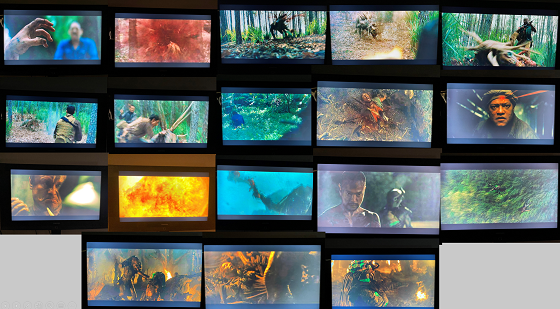
Though pretty damn decent as far as the creativity of kills and its willingness to lean into its R rating, this one lacked where it counted the most: kill count and frequency. A decent entry into the Predator canon and fronted by an absolutely shredded Adrien Brody, there just wasn’t enough dead meat available on this alien hunting preserve to put it in competition with the rest of the franchise.
Although Predators started strong with the blind parachute jump and the unfortunate soul whose canopy didn’t deploy at 03:08, over 24 minutes passed before the next burst of mayhem. But the original Predator went over 21 minutes without a kill, how can one fault this for following in its hallowed footsteps? Well, for starters, because it course-corrected with just 6 kills during the film’s first action set-piece (compared to the OG’s 50), and racked up a total of just 18 kills in all.
Which…well…look: Predators did a hell of a lot right, paying homage to the franchise with several thematic and visual call-backs to the original, yet as far as kills and kill frequency, this one was wanting. Director Nimrod Antal made a valiant go of things by weaving in the deaths of Cuchillo (Danny Trejo) and Mombasa (Mahershala Ali) between the hunting dog and Noland (Laurence Fishburne) set pieces, but the gaps were just too large.
And while this one’s heart was in the right place, and proved to be a helluva fun watch, the stats just don’t lie. With just 18 onscreen murders in 101 minutes (two minutes shorter than the original, and one shorter than its predecessor), this one had a frequency of 5.46 minutes between kills, and an overall average of just 0.17 kills a minute, far below the last two installments, and miles behind the most recent entry.
The Predator
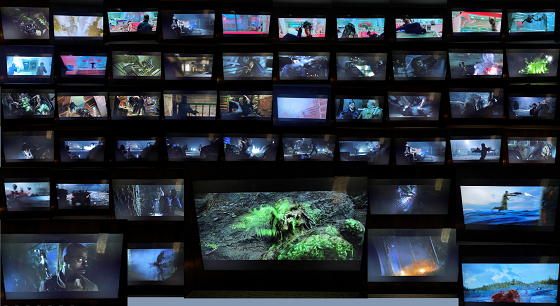
Finally, a Predator movie that realized this franchise requires more than just heroes and Predators: it needs anonymous dead-meat cannon fodder to keep things lively between scalpings. The first one had a camp full of South American soldiers, the second had Jamaican and Columbian narcos, and this one had private military stooges. This allowed for that perfect balance of main character attrition and near-constant blood-letting that gives the audience the kills it wants without depleting the main roster too quickly.
Like all previous installments with the exception of the gleefully impatient Predator 2, this one didn’t really kick into high gear for 20+ minutes. A couple of jungle kills aside right off the top, it wasn’t until 0:28:51 that the audience got a proper tour through the Predator abattoir. 16 baddies dropped in the next 9 minutes, with a few spurts to keep things lively until the next major bloodletting, which started at 1:15:12. Oh, and if you haven’t seen it or don’t remember, it went ever so fucking hard from there: racking up 17 kills in the next 3 minutes and 46 seconds (including a delightful 3-in-1 jeep decapitation maneuver).
It was just magnificent, and it amounted to 52 total kills in just 100 tidy minutes, with an overall average of 1 kill every 1.92 minutes (or 0.52 kills a minute), with an overall average frequency of 108.23 seconds between kills.
So, what does that data tell us?

Although there were some interesting variances in the figures, the data showed that more kills translated not just into a better overall average for the film, but as a boon to its frequency criteria as well. And while a movie like Predator 2 seemed to have better spacing between its kills (including starting strong from the jump), the fact that it came in a full nine bodies lower than The Predator dashed any chances of it moving ahead of its 2018 counterpart in the analysis.
Thus, when evaluating the four existing Predator films based on kill count and frequency, the ranking in this table sets them in order in both categories.
Total Predators
Sticking with the numbers, this next category was even more simple. This wasn’t hard: more Predators is better than less Predators. Fact.
As Mae West once said, “Too much of a good thing can be wonderful,” and that’s a sentiment this purely scientific study felt compelled to get behind. The breakdown follows thus:

The original Predator was appropriately titled in the singular, with the onscreen appearance of just one Yautja: the Jungle Hunter.
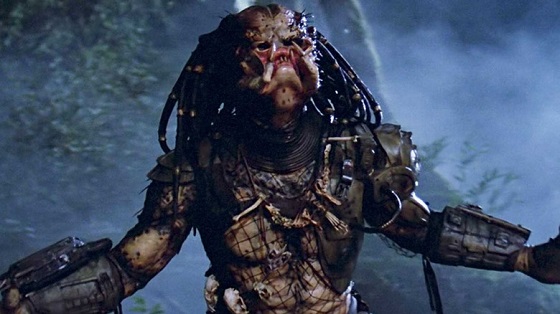
A few short years later Predator 2 asked how many Predators is too many? To the benefit of audiences and mankind, they settled on 10.
Don’t believe me? Count ‘em!
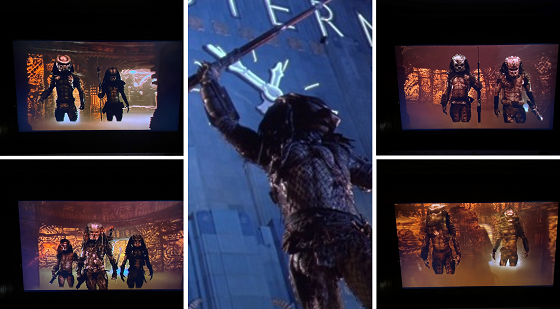
There was the City Hunter that Lt. Harrigan battled, along with nine visible shipmates that appeared after the plucky human had smote their comrade. It was a brief appearance, but an important one that helped establish a wider universe and mythos for these aliens.
And while Predators did alright for itself with an entirely respectable count of four (three Super Predators, one Classic), it represented a step down for the franchise in this particular category. This was a dubious tradition the 2018 installment held true to with just two onscreen Predators, one Super/Ultimate and one Classic.
Which…look, having a bunch of Predators in your Predator film won’t save it outright, but it won’t hurt it, either. When in doubt: more Predators.
Acting Quality
If one evaluates the top-line acting talent of any given movie on the EGOT (Emmy-Grammy-Oscar-Tony) scale and assigns point values to each award, then this also becomes quite easy to analyze. If we assign One point for a Grammy, two points for an Emmy, and three for either an Oscar or Tony (and a consolation point for an Oscar nomination without a win), then the data does the work for us, here. To wit:
Predator (1987)
Predator might have had the whole governor thing covered, but as far as awards hardware, it was lacking. Only the Austrian Oak himself represented in this category, with just a single EGOT-win under his belt (an executive producing Primetime Emmy for 2014’s Outstanding Documentary or Nonfiction Series winner Years of Living Dangerously). But that’s it!

Predator 2 (1990)
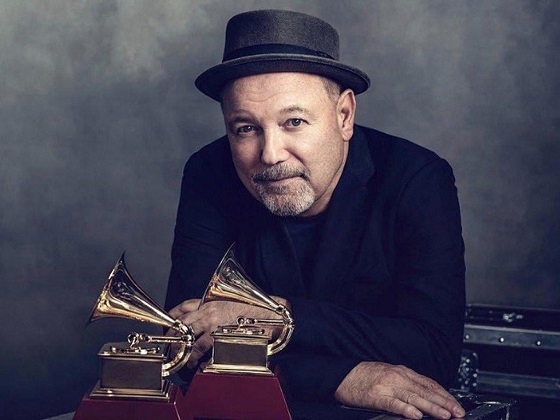
A sneaky-competitive candidate, Predator 2 was more viable in this category than one might expect. Gary Busey’s nomination for The Buddy Holly Story gave this one a point, and another three for Danny Glover’s Academy Award as a recipient of the Jean Hersholt Humanitarian Award. Don’t look now, though, because Ruben Blades has nine, count ‘em, NINE Grammys! Mr. Blades’ contributions to Latin pop brings the total score for Predator 2 up to a whopping 13, where it enjoyed the top spot for only a handful of seconds…right before the awards buzzsaw that is Predators ripped through it like a Yautja Smart Disc.

Predators (2010)
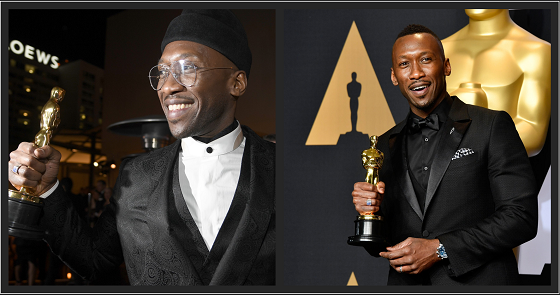
Nothing less than an embarrassment of riches in this category, Predators had an EGOT Murder’s Row for its top-line cast. Laurence Fishburne alone racked up 10 points with three Emmy wins, one Tony, and an Oscar nomination. Oh, and in case you forgot, fucking two-time Academy Award winner Mahershala Ali was in this movie, too, accounting for eight total points (two Oscar Wins and an Emmy). If you combine that with Adrien Brody’s Oscar win, and Topher Grace’s Emmy, that’s a whopping 23 points for Predators!
Spoiler alert, none of the other three films come anywhere near this number. Respect.

The Predator (2018)
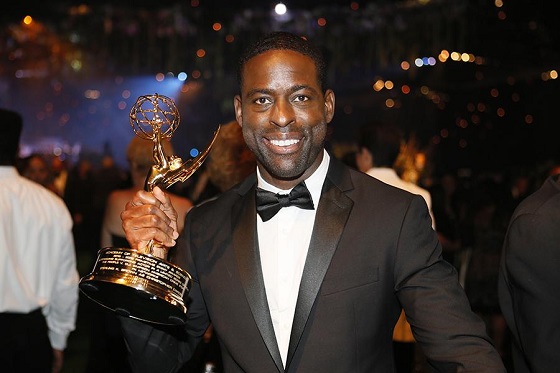
This is a real “A-for-effort” scenario. There were some fine actors and artists in The Predator, several of whom have already locked down awards hardware, but the fact that this picture has had only had a handful of years to earn its cast subsequent statues handicapped it. Indeed, it’s easy to imagine Alfie Allen, Jacob Tremblay, Trevante Rhodes, and even Thomas Jane getting something on the EGOT spectrum one day, but alas, it has not yet come to pass. Only the Emmys from Sterling K. Brown (two) and Keegan-Michael Key (one) allowed for points in this category, which saw The Predator with just 6 total.

Box Office
Money walks and bullshit walks, amirite? Although a Predator film shouldn’t be judged solely on its box office haul, the worldwide gross against production budget formula is an undeniable load bearing point upon which everything else can be evaluated within a larger analytical matrix. According to IMDb the details of all four installments are as follows:

Naturally, some of this was just a matter of good vs. bad timing. Predator 2, for example, came out in late-November 1990, where it had to do battle against awards juggernaut Dances with Wolves and one of the all-time highest grossing movies in history, Home Alone. On the flip side, Predator released in a somewhat thin action market in June 1987, where its primary competition was Beverly Hills Cop 2, released almost a month earlier. Similarly, when Predators dropped over the Fourth of July weekend in 2010, the other studios seemed to have abandoned the traditionally audience-rich weekend to its own devices. Perhaps it was the mistaken assumption that June drops like The A-Team, Knight and Day, and Jonah Hex would still be stretching their legs, but aside from Inception (released July 15), Predators didn’t have any real genre competition until the August 3 release of The Expendables.
And then you get The Predator, which really didn’t have any excuses to hide behind. Released on September 5, 2018, its only competition that weekend was The Nun, and neither saw any interlopers nudging in on their genre’s demographics until September 28’s release of Venom. Prior to September, a mostly dead summer that hadn’t seen a big hit since July 6’s Aquaman should have teed The Predator up for big returns from audiences starved for action, yet the movie just didn’t bring them out.
Thus, at the end of the day, all one has is the figures. This put Predator in the resounding lead in this category, followed by Predators, Predator 2, and The Predator (in that order).
Critical Score
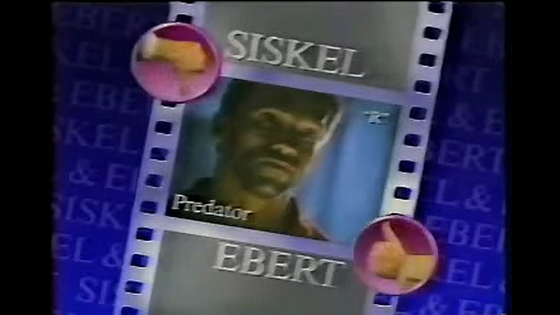
This one’s a real kick to the teeth, no doubt. Although a few forward-thinking critics harbored some degree of appreciation for the original, the press traditionally haven’t been all that kind to the franchise. Roger Ebert admired the original up to a point, writing, “Predator moves at a breakneck pace, it has strong and simple characterizations, it has good location photography and terrific special effects, and it supplies what it claims to supply: an effective action movie.” He was less enthusiastic about the follow-up, however, writing, “The dialogue is foul and clinical, and the special effects, while expensive, are not interesting.”
And while Rita Kempley was a bit warmer on Predator 2, writing that director Stephen Hopkins, “keeps the pedal to the metal but never allows the explosive action to minimize the actors,” far more fell into the Ebert camp. Which is to say that in most cases, critics seem to spend much more time thinking about the world-building logistics of these films, and less about the escapist fun of watching giant bipedal extraterrestrials underestimating human bad-asses. This theme came up frequently in Ebert’s 2010 review of Predators, where he wrote, “Who runs this game preserve, and why?…Is it a wise use of resources to transport several mammals untold light years through space just so you can watch them getting their asses predatored?”
Yes, Roger. Yes it is.
And while the most recent installment, The Predator, did suffer under the constraints of a studio edit hack job (and a poorly conceived subplot concerned with autism), many of the same criticisms surfaced once again. Even so, the data is important, and thus we have the following:
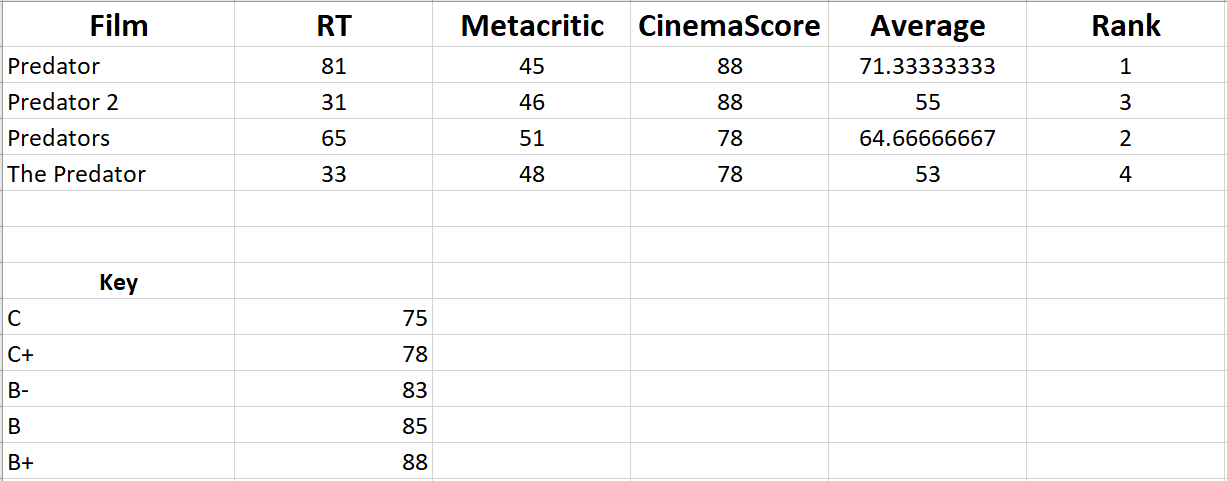
Hand-to-Hand Melee Encounters
With one decision, just one exasperated resignation, a cherished and essential tradition found life. And it made sense, too. Just put yourself in Billy’s boots in Predator…go ahead, I’ll wait.
By the time he ditched the radio and his rifle (1:14:25), Billy had not only encountered an actual murderous alien, but he had confirmed his worst fears in the most terrible way imaginable. This is like moving into a spooky mansion, suspecting that it’s haunted, and then watching actual ghosts slaughter your whole family.
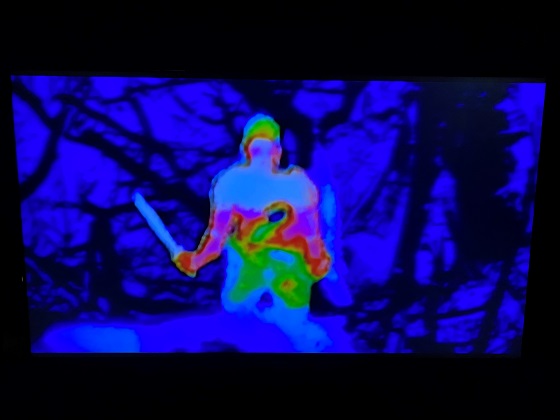
The fragile human psyche just can’t be expected to handle something this off-book, and if there’s one thing all Predator films have in common, it’s a sense that every Earthling has a breaking point. For Billy, it was hearing the tortured screams of Dillon (Carl Weathers), whose death seemed to convince Billy that his own was inevitable. Tired of running, of being afraid, of relying on flimsy technology that seemed to have no bearing on the issue at hand, Billy stripped down and ditched everything except a fuck-off-big machete.
And by all accounts, Yautja really, really dig this. In Predator, the Jungle Hunter made short work of Billy hand-to-hand (1:15:40), yet seemed to enjoy that so much that he went back for seconds with Dutch, abandoning everything in his armaments rig except melee weapons. If we combine these two encounters, we get 75 seconds (Billy’s brief stand) + four minutes and 47 seconds between the Jungle Hunter and Dutch (starting with the former’s abandonment of his plasmacaster and ending with the arming of his wrist bomb). Combined, that’s six minutes and two seconds of hand-to-hand fighting in the original.
This seems like a healthy amount (5.8% of the overall runtime), yet it paled in comparison to what’s blessedly given to audiences in Predator 2, which devoted most of the third act’s back half to a melee duel. From 1:27:03, when Harrigan lost his laser-scoped hand cannon, to the conclusion of the spaceship blade fight at 1:35:25, the City Hunter and the good lieutenant spent 8 minutes and 22 seconds going at it hand to hand. And that’s not even taking into account the absolutely metal way King Willie went out when confronted by the “demon” he tried to warn Harrigan about. Like Billy, when King Willie was confronted by the monster that tickled his sixth sense, he more or less went insane and decided to square up with nothing more than a sword. Again, like Billy, the Yautja made quick work of his foe, but at least found a little respect for the species if this franchise trope is to be believed. These two encounters combined for a staggering eight minutes and 44 seconds. This represented 8.6% of the film, a very respectable number.
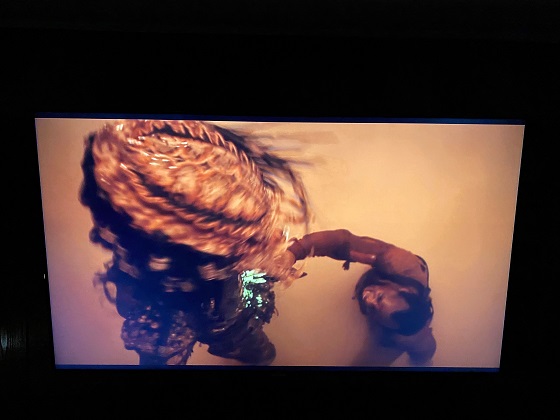
And while Predators paid tribute to the tradition of honorable combat between human and space hunter, it left far less room for it. Like Billy, King Willie, and Lt. Harrigan, by the time Hanzo (Louis Ozawa) faced off against the Falconer Super Predator, he’d had about all he could take. Once again, we saw a noble warrior tired of running, tired of being scared and waiting for death to come: deciding instead to make a fucking reservation.
And again, the Predator in question seemed to really vibe on this. It was a brief duel, yet a magnificent one, starting at 1:17:23 when Hanzo nudged the katana out of its scabbard, ending with his and his opponent’s death at 1:19:19. And while Royce did go mostly hand-to-hand in his final match-up with the Super Predator, Isabelle used her rifle to seal the deal, eliminating this encounter from consideration in this category. Just under two minutes out of 101 total represents 1.7% of the total film, and put this one firmly in 3rd place, where it will remain due to the shameful near-abandonment of this trope in The Predator!
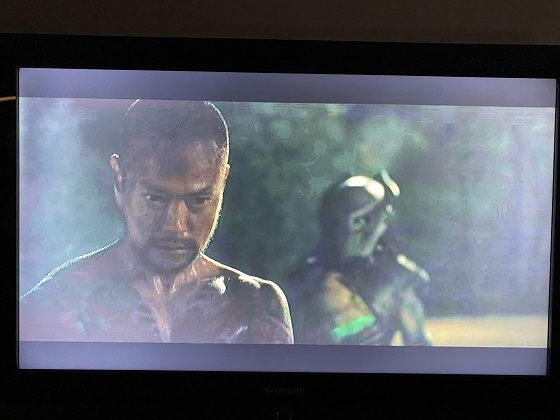
And really, there’s no excuse for this. The closest this film came to an honest-to-goodness hand-to-hand battle took place between the two Predators, and even this was suspect (OG Predator opened the tussle with a plasmacaster blast). Starting at 56:45 and wrapping up just 51 seconds later with an admittedly spectacular decapitation, this one gave audiences the least amount of hand-to-hand action out of the bunch (less than one percent of the total runtime).
Body Mass
“It’s important to pack on mass!”
-Mac, It’s Always Sunny in Philadelphia
The last and most difficult category to assess with strict scientific precision, yet there’s hope for a fair accounting using a few baseline data points. To do so we start with Predator and the good Major himself. During his late-70s bodybuilding heyday, Schwarzenegger at 6’2’’ came in at 235 pounds in-competition, and roughly 260 when not. And while Arnold wasn’t in prime bodybuilding shape in 1986-87, he has remarked that he slimmed down roughly 25 pounds for his role in Predator, speculating that a special forces soldier would need to carry less weight. Thus, while his overall muscle mass didn’t compare to his competition days, assuming his resting Hollywood weight was slightly heavier than his body-building days, this put him at 265 pre-shoot, and 240 during.
Using this figure and Schwarzenegger’s height as our body mass Rosetta Stone, we can extrapolate reasonable estimations for the eight top-line speaking cast thus:
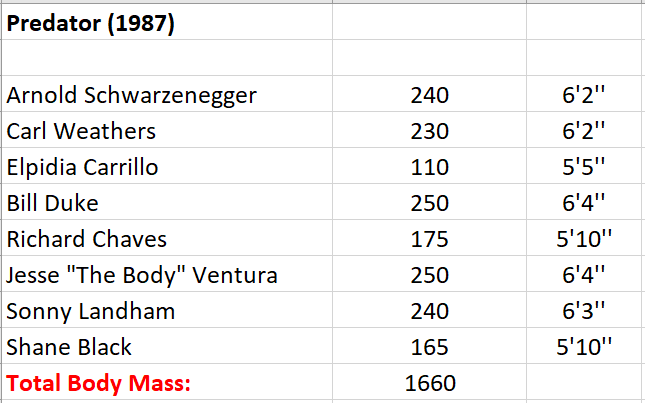
Using Arnold’s lean 240 lb. frame at 6’2’’ as the measuring stick, we can give Ventura an extra 10 pounds to account for two additional inches and less tone (using that same figuring for Landham at 6’3’’ and 240). At 5’5’’, Elpidia Carrillo gets a generous assessment of 110 pounds, as does Shane Black at 5’10’’ and 165, though what may first seem like a drastic muscle deficiency may well be the victim of comparison bias. Taking conservative estimates all around, this one still comes in at a cumulative mass of 1660 pounds for the top-line acting talent, a figure its sequel did indeed take a run at…
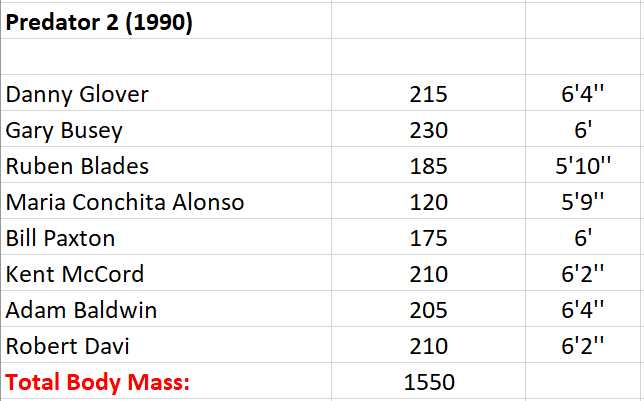
Unfortunately, there were no competitive athletes with archived stats top-lining Predator 2, so there wasn’t as solid of a cast baseline, here, yet the internet came through on heights, and the 8-actor sample remained constant. An impressive 6’4’’, Danny Glover was flat-out cut in this one, showing off his rippling midsection early in the picture during a shirt-change. If we call him 215, then Adam Baldwin’s thinner frame at the same height would put him at around 205, 5 pounds less than the older Kent McCord at 6’2’’, and Robert Davi at the same height. 6’ Bill Paxton never looked leaner than he did here, and while he didn’t pack on a ton of mass for the role, he looked like a healthy 175, 10 pounds less than Ruben Blades at 5’10’’. Rounding things out, Busey appeared to be a hanging a husky 230 or so on his 6’ frame, and 5’9’’ Maria Conchita Alonso, still in Running Man shape, probably came in at about 120 pounds. Although it wasn’t all muscle, mass is mass, bringing Predator 2 in at 1550 pounds, just one Elpidia Carrillo away from the top spot.

Finally: another competitive athlete in the cast! Predators featured former MMA champion Oleg Taktarov, who in his prime sported a fighting weight of 210 lbs. at 6’ tall. More than a decade removed from his octagon days, though still in decent shape, Taktarov seemed to be at around 225 in this picture, allowing for a decent baseline to evaluate the rest of the cast. An inch taller though considerably leaner and shredded, Brody looked to be a healthy 190 or so, right about what Mahershala was at 6’2’’ (though he appeared a bit less cut, and is accounted for at 185). Walton Goggins at 5’10’’ and Topher Grace at 5’11’’ seemed wiry and sneaky tough, but neither appeared to have packed on mass enough to get them over 155 or 160. Louis Ozawa at a trim yet beefy 185 balanced out Alice Braga’s diminutive stature at 5’7’’ and what looks (generously) to be about 135 pounds. And while Laurence Fishburne certainly did his part at what seemed to be about 230 lbs. on a 6’ frame, this one still ended up solidly in third place with a combined 1445 pounds of mass.
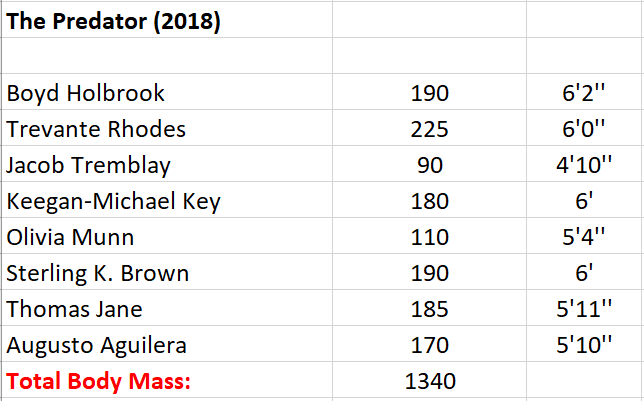
There was real hope for this one. Boyd Holbrook, Trevante Rhodes, and Sterling K. Brown all have frames capable of stacking mass, yet even they couldn’t save this one’s overall category score against a pre-teen kid and 5’4’’ Olivia Munn. Jacob Tremblay couldn’t have been more than 90 pounds in this flick, and Munn was lucky to clock in at anything more than 110 without rocks in her pockets. And while Thomas Jane certainly seemed as if he was doing his part at what appears to be about 185 at 5’11’’, slight builds on Keegan-Michael Key and Augusto Aguilera ran this one out of serious consideration. Coming in at a combined 1340 pounds, net, that’s good enough for last in the overall ranking, and lightyears behind the OG vis a vis packing on mass.
So, it really was Predator in a runaway, here. The combination of rigorous off-screen training, diarrhea, and late-80s big dick energy brought the principle cast to a level of fitness and mass not seen before or since. Indeed, it was such a remarkable achievement that none of the subsequent installments have ever seriously challenged the original on these terms, though Predator 2 did have a stunning collection of tall actors that came within spitting distance of it.
Final Analysis
This investigation began with the supposition that data-driven analytics could determine not just the necessary qualifications for a great Predator movie, but that one could establish the best installment of the Predator franchise by studying these same metrics. Sticking to these figures and applying a straight mathematical average to each category’s ranking, the results are as follows:

So it is indeed the original Predator at the summit! If the data proved anything, however, it’s the fact that the original’s place on top of the franchise heap is no mistake or fluke. You don’t have to pitch a perfect game to beat the OG, as even Schwarzenegger’s best movie failed to lock down the first position in several categories. Deficient in awards hardware, total Predators, and even hand-to-hand combat, it still had enough gas to get it on the podium’s preferred position, though.
Yet that spot is not assured in perpetuity, as this investigation has provided a clear roadmap to unseat the champion. This seems easy enough: take the best parts of the original, improve upon them while increasing the stakes, and cruise to the bank. Although some sequels improved on things by adding more Predators, bringing in better actors, and increasing the hand-to-hand combat quotients, too often the essentials got lost in the shuffle of studio notes and focus group rewrites. This week we’ll all find out if Prey takes heed of these lessons, but if any enterprising, interested party is curious, the data is there for the taking.





Comments on this entry are closed.